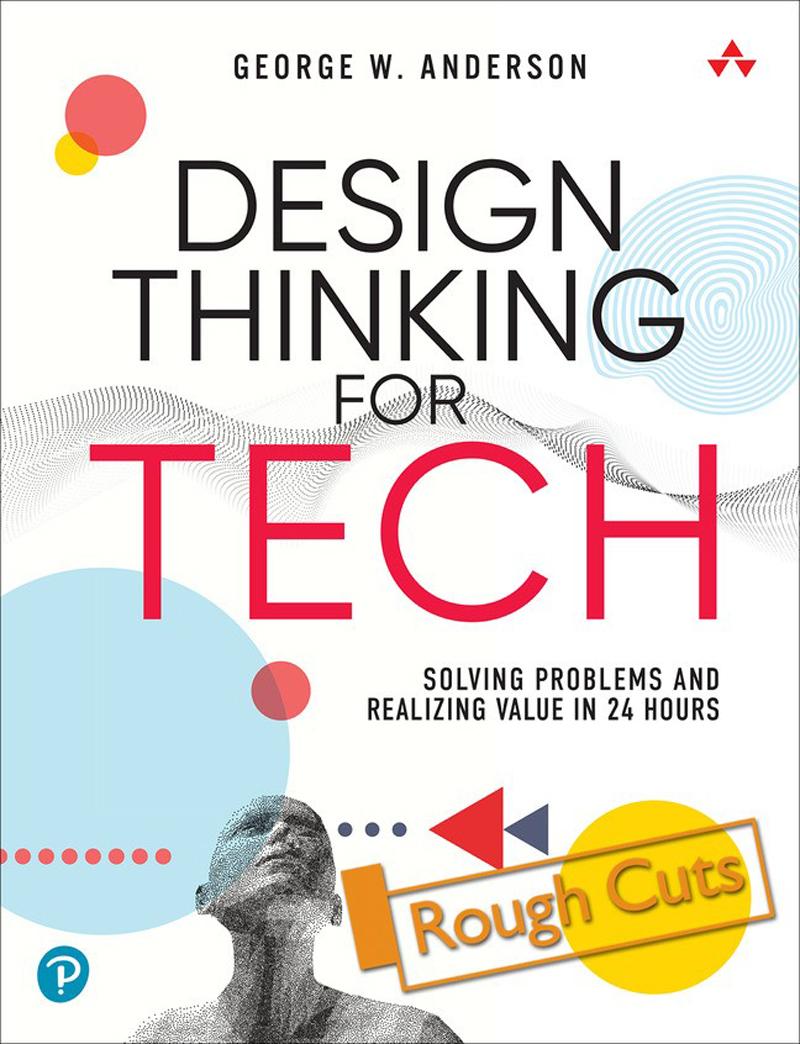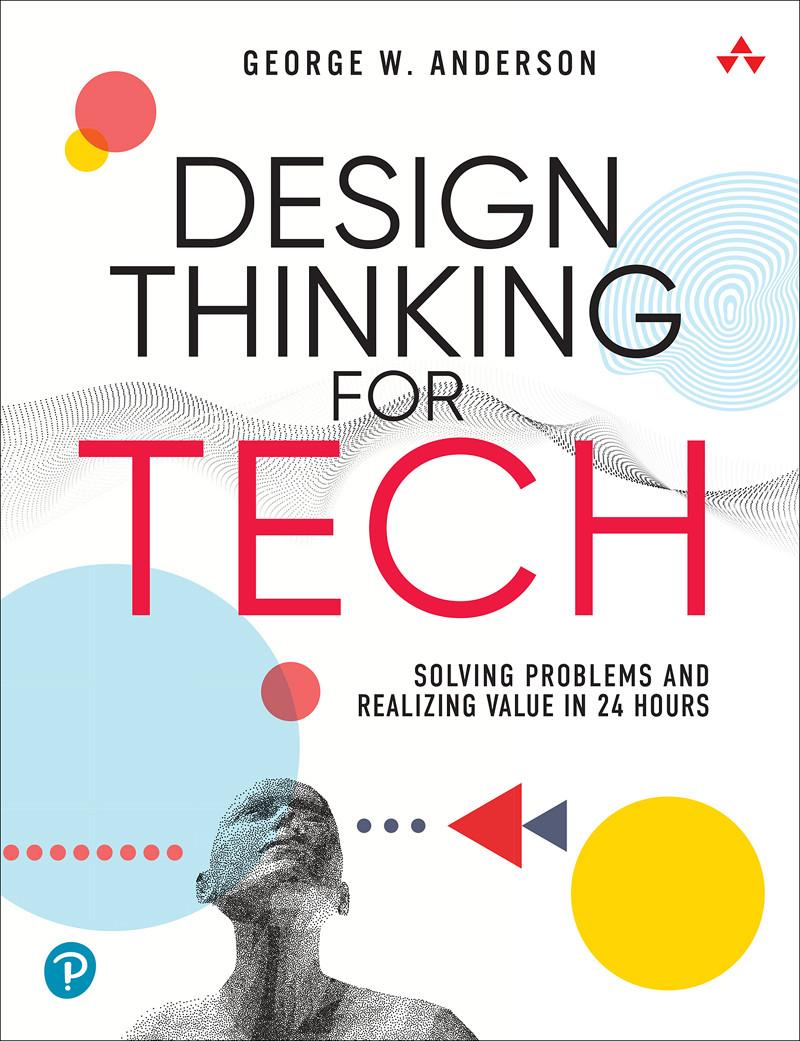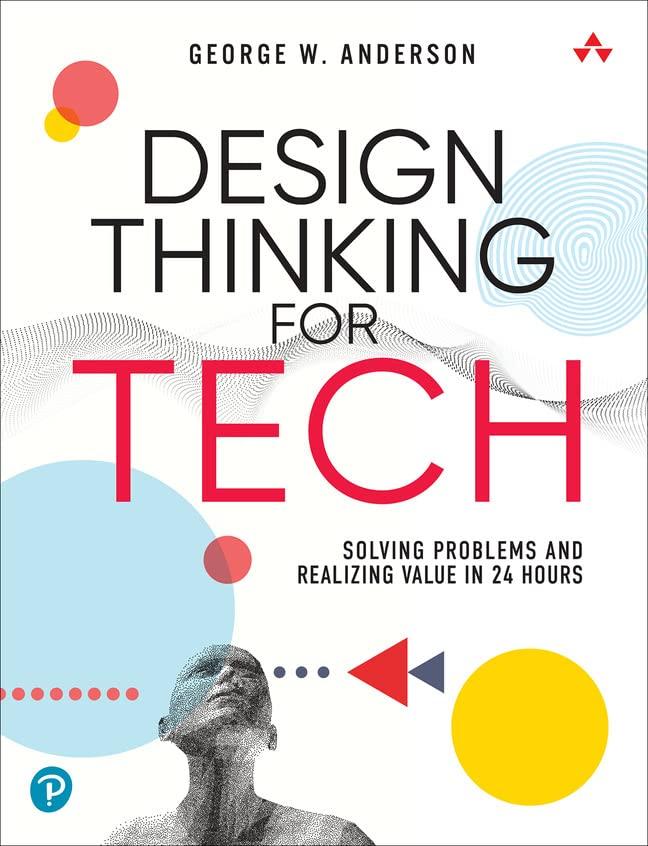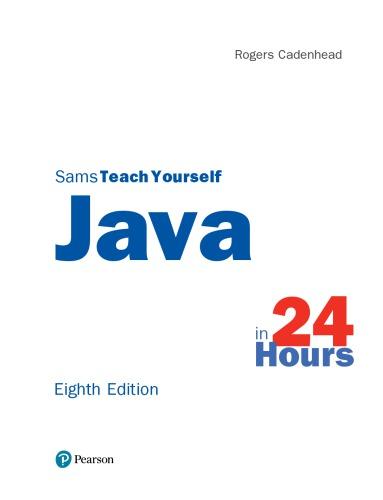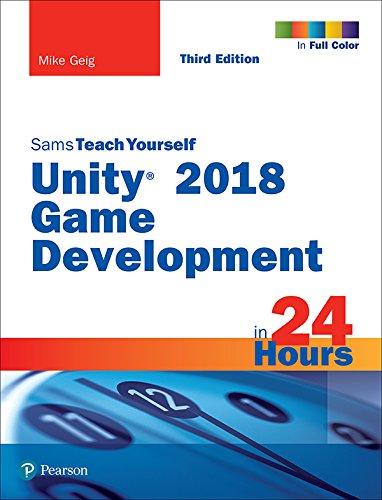Contents at a Glance
Part I: Design Thinking Basics
Hour 1. Design Thinking Explained
Hour 2. A Design Thinking Model for Tech
Hour 3. Design Thinking for Small Audiences
Hour 4. Resilient and Sustainable Teams
Hour 5. Visible and Visual Teamwork
Part II: Understanding Broadly
Hour 6. Understanding the Lay of the Land
Hour 7. Connecting with the Right People
Hour 8. Learning and Empathizing
Hour 9. Identifying the Right Problem
Part III: Thinking Differently
Hour 10. Introduction to Thinking Differently
Hour 11. Guardrails for Thinking Creatively
Hour 12. Exercises for Increasing Creativity
Hour 13. Exercises for Reducing Uncertainty
Hour 14. Thinking for Problem Solving
Part IV: Delivering Value
Hour 15. Cross-Teaming and Communicating for Outcomes
Hour 16. Prototyping and Solutioning by Doing
Hour 17. Solutioning Small and Fast
Hour 18. Delivering Value at Velocity
Part V: Iterating for Progress
Hour 19. Testing for Validation
Hour 20. Feedback for Continuous Improvement
Hour 21. Deploying for Progress
Hour 22. Operating at Scale
Hour 23. Making Change Sticky
Hour 24. Design Thinking for Project Velocity
Appendix A. Case Study Quiz Answers
Appendix B. Summary of Design Thinking Techniques and Exercises
Appendix C. Design Thinking in Action (by the Hour)
References
Table of Contents
Part I: Design Thinking Basics
Hour 1. Design Thinking Explained
Thinking Slower to Deliver Faster
A Process for Progress: Popular Design Thinking Models
Our Design Thinking Model for Tech
The Battle Between Perfection and Time
The What: Techniques and Exercises
The How: The Design Thinking Cycle for Progress
The When: Ambiguity, Complexity, and Uncertainty
The Why: Better Practices and Faster Outcomes
The Who: Design Thinking by Technology Role
Design Thinking in Action: Real-world Tech Examples
What Not to Do: Lessons Learned the Hard Way
Summary
Workshop
Hour 2. A Design Thinking Model for Tech
Human-Centered Thinking
Design Thinking in Four Phases
Phase 1: Understanding Broadly
Phase 2: Thinking Differently
Phase 3: Delivering Value
Phase 4: Iterating for Progress
What Not to Do: Exclusively Left to Right
Summary
Workshop
Hour 3. Design Thinking for Small Audiences
Design Thinking for Me
Learning More Quickly
Thinking and Problem Solving
Coping with Ambiguity
Prioritizing Next Best Steps for Uncertainty
Executing More Effectively
What Not to Do: This Isn’t for Me
Summary
Workshop
Hour 4. Resilient and Sustainable Teams
Design Thinking for Tech Team Alignment
Design Thinking for Sustainable Teams
Responsibly Operating at Speed
What Not to Do: The Archipelago Effect
Summary
Workshop
Hour 5. Visible and Visual Teamwork
Making Teamwork Visible and Visual
Tools for Visual Collaboration
Executing a Design Thinking Exercise
Stage One: Prepare for the Exercise
Stage Two: Run the Exercise
Stage Three: Conclude the Exercise
What Not to Do: Keeping It All Inside
Summary
Workbook
Part II: Understanding Broadly
Hour 6. Understanding the Lay of the Land
Listening and Understanding
Assessing the Broader Environment
Understanding and Articulating Value
What Not to Do: Ignore the Culture Fractals
Summary
Workshop
Hour 7. Connecting with the Right People
A Framework for Finding and Prioritizing People
Exercises for Stakeholder Mapping and Prioritization
Exercises and Techniques for Engaging Stakeholders
What Not to Do: Stick to the Happy Path
Summary
Workbook
Hour 8. Learning and Empathizing
From Stakeholders to Personas
Three Types of Empathy
A 360-Degree Model for Empathizing
A Recipe for Empathizing
What Not to Do: Ignore the 20 Percent
Summary
Workshop
Hour 9. Identifying the Right Problem
Identifying and Understanding a Problem
Three Exercises for Problem Identification
Techniques and Exercises for Problem Validation
What Not to Do: Jump in! (to the Wrong Problem)
Summary
Workshop
Part III: Thinking Differently
Hour 10. Introduction to Thinking Differently
Ideation and Thinking for Problem Solving
Divergent and Convergent Thinking
Warm-ups for Thinking Differently
Techniques for Clearing the Mind
What Not to Do: Stay Convergent!
Summary
Workshop
Hour 11. Guardrails for Thinking Creatively
Constraints and Guardrails
Simple Guardrails for Thinking Differently Exercises for Thinking Through Risks
Crazy Techniques for Extreme Thinking
What Not to Do: Avoid the Silly-Sounding Stuff
Summary
Workshop
Hour 12. Exercises for Increasing Creativity
Creativity and Thinking
Techniques and Exercises for Creative Thinking
What Not to Do: Concluding Thinking Too Early
Summary
Workshop
Hour 13. Exercises for Reducing Uncertainty
Next-Step Thinking for Uncertain Situations
Reducing Uncertainty and Ambiguity
Working Through Uncertainty and What’s Next
What Not to Do: The Brute-Force Path
Summary
Workshop
Hour 14. Thinking for Problem Solving
From Ideas to Potential Solutions
Visual Exercises for Problem Solving
What Not to Do: Skimp on Brainstorming
Summary
Workshop
Part IV: Delivering Value
Hour 15. Cross-Teaming and Communicating for Outcomes
Cross-Boundary Teaming for Collaboration Techniques for Working Across Teams Techniques for Communications Challenges What Not to Do: Using Words When a Picture Is Needed
Summary
Workshop
Hour 16. Prototyping and Solutioning by Doing
The Prototyping and Solutioning Mindset Making Progress versus Solving the Entire Problem Techniques for Making Planned Progress What Not to Do: Ignoring the Inverse Power Law Summary Workshop
Hour 17. Solutioning Small and Fast
The Progress Mindset: Showing Up and Starting Small Realizing Value Through Objectives and Key Results Starting Small and Delivering Fast Techniques for Delivering and Executing to Think For a Limited Time Only… What Not to Do: The Forever MVP Summary
Workshop
Hour 18. Delivering Value at Velocity
Delivery Techniques for Increasing Value Velocity
Team Considerations for Velocity
Change Control Considerations for Velocity
What Not to Do: Shrink Sprints to Speed Up
Summary
Workshop
Part V: Iterating for Progress
Hour 19. Testing for Validation
The Testing Mindset
Traditional Types of Testing
Testing Techniques for Learning and Validating
Testing Tools for Feedback
What Not to Do: Automate Everything
Summary
Workshop
Hour 20. Feedback for Continuous Improvement
Simple Feedback Techniques
Strategic Feedback and Reflection Techniques
What Not to Do: Wait for Late Feedback
Summary
Workshop
Hour 21. Deploying for Progress
Avoiding Perfection Traps
Novel Techniques for Making Progress
Edge Case Techniques for Deploying and Realizing
Value
What Not to Do: Deploying Too Soon
Summary
Workshop
Hour 22. Operating at Scale
Techniques and Exercises for Effective Scaling
Operational Resiliency Techniques
Techniques for Sustaining Systems and Value
What Not to Do: The Scale versus Features Mandate
Summary
Workshop
Hour 23. Making Change Sticky
Change Management and Adoption
The Four Phase Change Process
Methods for Creating Awareness
Techniques for Providing Purpose
Driving Readiness Through Design Thinking
Four Techniques for Adopting Change
Techniques for Timing Change
What Not to Do: Change Management Can Wait
Summary
Workshop
Hour 24. Design Thinking for Project Velocity
Project Management Velocity
Leadership and Governance
Stakeholders and Expectations
Development Approach
Risk Management
Schedule Management
Managing Scope
Delivery and Quality
Communications and Collaboration
What Not to Do: No Courage, No Future
Summary
Workshop
Appendix A. Case Study Quiz Answers
Appendix B. Summary of Design Thinking Techniques and Exercises
Appendix C. Design Thinking in Action (by the Hour)
References
Foreword
George Anderson and I first met in 2011, when I became his colleague at Microsoft. It was my first job at Microsoft, and George had only been there a few months longer than I, but it never seemed like it. As I struggled with impostor syndrome and felt almost completely unable to cope with the demands and workload around me, George seemed to be able to calmly get things done. He was, how can I put it? Just in control.
It was hardly surprising that within a few short months he was my manager. As I learned more about him, I could never quite figure out how one person could just DO so much. He and I were close to each other in age, but somehow this guy had managed to squeeze in an MBA and PhD, regularly taught at university, volunteered at his church, andhad written nearly a dozen books. Oh, and yes, somehow there was a wife and three kids in there as well. How infuriating!
Once I’d got over my inferiority complex, I realized that I had the good fortune to be around someone I could really learn from. As we worked closely together, I was in a sense a “George” apprentice. While I never nailed it quite like him, I could do a pretty good approximation.
Over time, our careers at Microsoft diverged, and we moved from friendly colleagues to friends who would catch up for dinner when he was in town. I never stopped learning from every interaction.
Then around 2019, I realized something I never had realized before about George. Yes, he was remarkable, but remarkable in a different
and accessible way. Meet a basketball great, and chances are you know 1) They are superb at what they do, and 2) You will never be as great as them, no matter what you do. But George’s particular version of greatness is completely approachable, completely accessible, and even attainable. I may have felt that I could never accomplish what he had, but through his personal interactions with me, his lived example, and through his written work he was literally giving me the roadmap to accomplish what he had accomplished in a practical and step-by-step kind of way. A master of empathy immersion, his written works served as roadmaps that we could all walk together.
This latest book provides you with a roadmap for navigating the complex and the hidden, from someone who has spent a lifetime focusing deeply on how he uses every hour of every day to get the most out of himself and make a difference in the world around him. My advice is to read it, absorb it, learn the techniques, perform the exercises, and expand your career and life. It’s written for technology professionals, but just about anyone who is trying to figure out work and life will benefit from the read. It’s like George— smart, but deeply approachable and practical.
In 2020, I left Microsoft and formed a company called BillionMinds. Our mission is to help a billion people master tough work environments through behavior change. Every day we work with people to develop a new set of skills, to become in a sense more like George. So, take it from me, it can be done. Change is not only possible but accessible through the kinds of techniques and exercises explained here. Use this book to help master the uncertainty in front of you and the ambiguity surrounding you. Don’t let this be the book you get only halfway through and leave on the shelf. Let George help you as he has helped me and so many others, and you will surely be forever changed and, dare I say, grateful.
—Paul Slater, CEO and co-founder, BillionMinds
Preface
There has never been a more appropriate season for thinking and executing differently than the last several years. In that time, we have endured the tragedies and impact of a global pandemic, unforeseen drama around elections and masks and vaccinations, a global recession, the horrors of war and racial inequity, and tremendous changes in the workplace. We’ve also experienced working from home and sleeping at work, shifting to living life remotely, returning to new normals several times only to go back to remote living, adjusting to massive inflation, and so much more.
In the midst of this chaos and churn, more than ever we are looking for calm and clarity wherever we can find it. And they seem in short supply. Against this backdrop of chaos and change, there are still too many people personally and professionally
• Adapting by standing still, clinging to what we know and what has worked in the past…even after it’s clear that the old norms and ways of thinking will never help us get to a better tomorrow.
• Pushing back against untried ways of thinking and executing given all the changes we have already been forced to accommodate or work through.
• Looking in exhaustion for greener grass, often accepting any kind and color of grass as long as it’s different from the old grass.
We are fighting harder than ever against further change as we seek to control the little we can actually control. We need a better way to
think through challenges and solve our most difficult problems. A better way to navigate uncertainty by taking the next best step. A better way to cut through the ambiguity surrounding us and our situations. We need help, and we need it more than ever. There’s never been a better time to think and execute differently, to put Design Thinking to the test in our most cherished and prized circles at home, at work, and in our lives.
